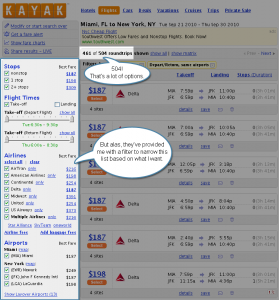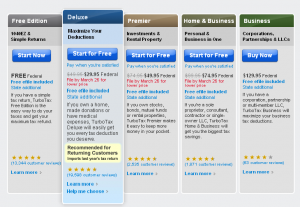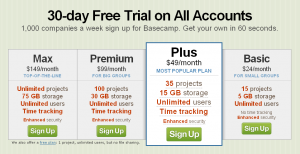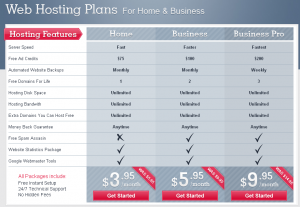Help Users Choose by Reducing Choices
Let’s face it, you probably won’t be surprised if I tell you that you’re faced with hundreds, maybe even thousands of choices a day. We are all increasingly aware that our lives have become busy messes and decision making has become a mix of quick fix decisions and complicated painstaking choices. In addition, the number of decisions we make every day just get bigger and bigger with every year as technology advances and information becomes more accessible. So how, with all of this madness surrounding us, can you expect your users to choose between all of the options you are providing them and close on a sale amongst the hustle and bustle of there already over complicated day?

Ways to Reduce Choices
Simple, help them make a decision by reducing the number of options they have to chose from. Well, it’s kind of that simple, there is a wee bit more to it. For example, if you reduce your product offering, how are you going to get the customer in the door in the first place? Unfortunately the answer is, you probably won’t. Well, that is unless you have one or two really super star products that keep your doors open.
Market Your Range of Features
So what’s an entrepreneur to do? Market to people with your features, your expansive product line and all of your fancy options and add-ins. Pull them in the door with awe and wonder knowing that you are there one-stop-shop solution. But, and this is important, once you get them in the door you need to reduce the number options. Research shows that we are attracted to the idea of options, but when it comes down to it, the more we have to chose from the less likely we will be to make a choice at all.
Narrow The Options
How can you do this? Think filters, grouping, categories, classes, levels, etc. All things can be categorized, get out the organizer in you and find a way to seemingly reduce the number of options so that your customer is more likely to make a choice. Our working memory can really only process about 4-6 things at once. That means in our heads we can really only compare about 4-6 unique items at one time assuming we are giving our full attention (which we rarely are). So this is a good number to shoot for.

Clear Separation of Choices and Recommendation,
Bonus: Social Impact Ratings
Now, let’s say you are providing your customer with 5 distinct options. That should do it right? Sorry, not quite yet. You have increased the likelihood that a choice can and will be made, but there is still a little more you can do. By providing a recommended option you again increase your odds that a decision will be made. In addition, if you can provide social proof to back up that recommendation (think customer ratings, # sold, testimonials, etc…) then you can help answer that little question in most everyone’s heads when making a decision…”what would you do?”.
Summary
So how can you entice users to your product or service through a range of options, but still close the sale by getting them to commit to a choice? Reduce the number of options. While options may bring people in the door, you also need to provide a way to filter those options down to a manageable list to aid in the decision making process. Keep in mind that our working memory can really only hold about 5 items at a time. If your presenting me with 10 choices it’s going to be impossible for me to evaluate them all without narrowing them into at least two sets of options first.
Additional Examples
The examples shown are mostly price plan screen shots, but keep in mind the principles above persist anytime you are asking your customers to choose between many options.

Provide a Recommendation
Make Choices Clear

